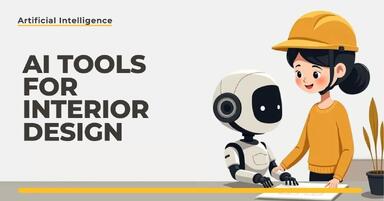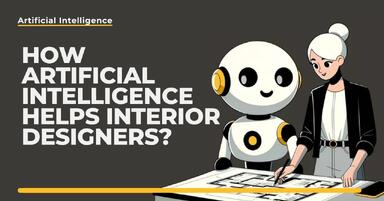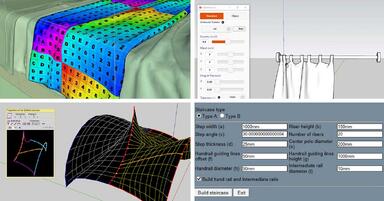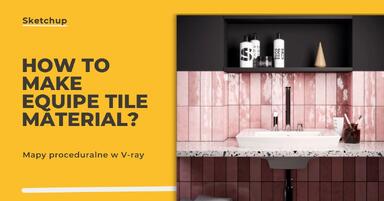Publication date: 06-02-2025 | Update date: 06-02-2025 | Author: Mateusz Ciećwierz
What is Stable Diffusion and what is it used for?
Stable Diffusion is one of the latest achievements in the field of artificial intelligence that revolutionizes the process of creating images. It is a generative model based on diffusion technology that allows transforming textual descriptions into realistic images. Thanks to its flexibility and computational power, Stable Diffusion has become a popular tool in the hands of graphic designers, interior designers, and marketing professionals.
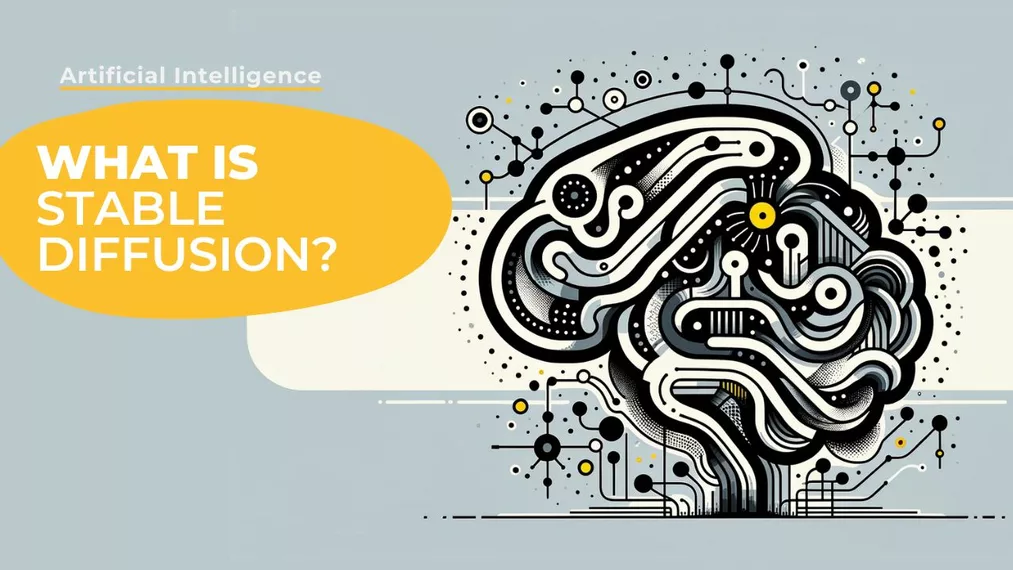
How Does Stable Diffusion Work?
Stable Diffusion utilizes information diffusion-based technology. The process begins with generating noise and then gradually 'denoising' the image to create an expressive, realistic result. This model operates based on the datasets it has been trained on, allowing it to interpret described elements and compositions and then transform them into graphics. As a result, users can easily obtain illustrations that would have taken many hours of traditional work to create.
The core of Stable Diffusion lies in the method of iteratively improving the image, resembling the process of painting - the model adds and modifies elements of the image step by step, based on the provided textual description. Through the use of advanced algorithms, this model can understand not only basic objects and their spatial relationships, but also subtle details such as lighting, textures, or perspective. This results in detailed images with a high level of realism.
Stable Diffusion is designed with maximum accessibility in mind. It operates as open-source, meaning anyone can use it for their own projects, and the community actively develops it, adapting to specific needs. Additionally, this tool can be integrated with other applications and services, opening up possibilities for automating creative processes, such as generating graphics for social media, creating architectural visualizations, or personalized marketing materials.
Applications of Stable Diffusion
Stable Diffusion finds wide applications in many industries, especially those involved in creating visual content. Here are a few examples of its usage:
- Interior Design – Interior designers use Stable Diffusion to quickly visualize concepts and ideas. With this tool, they can present clients with various versions of arrangements in a short time, which significantly speeds up the decision-making process. Stable Diffusion also allows experimentation with different styles, colors, and spatial layouts, enabling better customization to the client's needs. The ability to generate realistic visualizations also facilitates the presentation of more abstract concepts, aiding clients in better understanding proposed solutions.
- Marketing and Advertising – Marketing specialists use the model to create advertising graphics that attract the attention of potential customers. The ability to quickly generate images that align with specific requirements allows for the rapid creation of promotional campaigns. Stable Diffusion also enables the creation of personalized content tailored to the preferences and needs of specific target audiences. Moreover, the model can be used to test various visual variations, allowing marketers to optimize content for effectiveness.
- Graphics and Digital Art – Graphic designers and digital artists use Stable Diffusion to create unique illustrations, book covers, and elements for computer games. With advanced algorithms, the model can generate creative and realistic images. The ability to create complex compositions and experiment with different artistic styles makes Stable Diffusion a versatile tool for artists seeking inspiration or aiming to quickly realize their ideas. This model can also be used to create conceptual elements that are later developed and refined by artists.
- Moodboard Creation – Stable Diffusion is an ideal tool for generating moodboards. Designers can easily create inspirational compositions that help them better understand the project's atmosphere and present it to the client. Moodboards generated using Stable Diffusion can contain diverse elements – from colors and textures to specific objects and arrangement details. This makes the process of creating moodboards faster, and the compositions themselves more diverse and rich. This tool also allows for quick adaptation of the moodboard to changes in the client's preferences, increasing the designer's flexibility.
- Fashion Industry – In the fashion industry, Stable Diffusion is used for visualizing new collections, designing patterns for fabrics, and even generating initial sketches of clothing concepts. This enables designers to quickly experiment with different ideas and styles, leading to more efficient creative management. Stable Diffusion also allows the simulation of various materials and textures, aiding in better understanding how a particular project will look in reality. The ability to generate realistic visualizations also enables the creation of promotional materials for advertising campaigns even before the collection is finalized.
- Education – Stable Diffusion also finds application in education, particularly in teaching art and design. Students can use the model to experiment with different artistic styles and quickly create visual projects. This allows for a better understanding of the creation process and the development of their skills. This tool enables practical familiarity with techniques that were previously difficult to realize due to time or technical constraints. Stable Diffusion can also assist educators in creating educational materials, such as illustrations, diagrams, or visual examples, to aid in understanding complex concepts
- Entertainment and Filmmaking – In the film and entertainment industry, Stable Diffusion is used to create concept art, storyboards, and visualize special effects. With the ability to generate realistic images, the film production process can be significantly faster and more efficient. Stable Diffusion allows for the creation of initial scenes, which can then be further developed by graphic artists and special effects specialists. Additionally, the model is useful for creating visualizations of sets, costumes, or characterizations, aiding in better production planning and avoiding costly revisions at later stages. Due to its flexibility, Stable Diffusion can be used to create promotional graphics, movie posters, and marketing materials.
Expert's opinionPiotr KurpiewskiArchitekt, Grafik, Wykładowca PJATK w Warszawie
Stable Diffusion, as one of the few free AI tools, is revolutionizing many industries. Its unique ability to customize and easy modification allows for achieving spectacular effects, making it the best choice for professionals and beyond. said Piotr Kurpiewski - author of the course "AI - Artificial Intelligence in Interior Design"
Advantages and Limitations of Stable Diffusion
Stable Diffusion offers many advantages, making it popular among creative professionals. Firstly, it's free and accessible to everyone, making it easily accessible. Secondly, image generation is relatively fast, and the obtained results are often surprisingly realistic. Additionally, the ability to personalize and adjust image generation parameters allows users to achieve exactly the effects they need. This model enables the creation of both simple sketches and very detailed visualizations, making it a versatile tool for professionals.
Stable Diffusion is also highly flexible – it can be integrated with other tools and applications, enabling the automation of many processes related to creating visual content. Thanks to open-source community support, the model is continuously evolving, with new updates and add-ons expanding its capabilities. Examples include extensions that allow for animation generation or creating image sequences for video purposes.
However, it's essential to note some limitations. This model requires an appropriate textual description to achieve the desired results. An improper formulation can lead to inaccurate outcomes. Additionally, processing requires adequate computational resources – it may not always run smoothly on lower-powered computers. Moreover, despite its advanced capabilities, the model may sometimes generate images that do not fully align with the user's intentions, especially in the case of more abstract or complex descriptions. In such situations, experimenting with different descriptions or manual corrections of the generated images may be necessary.
Getting Started with Stable Diffusion
To start using Stable Diffusion, it's valuable to take advantage of ready-made tools and online courses. Courses can provide insights into the basics of using the model and demonstrate practical applications in graphic and interior design. Stable Diffusion can be run on a personal computer but also via cloud platforms that provide the necessary computational resources.
Summary
Stable Diffusion is a powerful tool in the realm of generative artificial intelligence, opening new possibilities for graphic designers, designers, and marketing specialists. With its accessibility, ease of use, and broad creative capabilities, this model has become an indispensable element in the toolkit of every creative professional.
If you want to learn more about using Stable Diffusion in interior design, check out our AI in interior design course.
Read on our blog
-
![Artificial Intelligence Tools in Interior Design]()
Artificial Intelligence Tools in Interior Design
Artificial intelligence is changing interior design by facilitating arrangement, visualization, and gathering inspiration. Discover the best AI tools on the market! -
![How Artificial Intelligence Helps Interior Designers?]()
How Artificial Intelligence Helps Interior Designers?
See how modern AI technologies are changing the approach to design, from automating inventory to creating inspiring visualizations. -
![10 useful SketchUp plugins you must know! Guide]()
10 useful SketchUp plugins you must know! Guide
In this text, you will learn about 10 plugins that will help you work faster and achieve better results in SketchUp. -
![Sketchup - How to create Equipe tile material? Procedural maps in V-Ray.]()
Sketchup - How to create Equipe tile material? Procedural maps in V-Ray.
The current mega-trend for rustic, ceramic tiles continues. Learn how to recreate them in visualizations in SketchUp!








